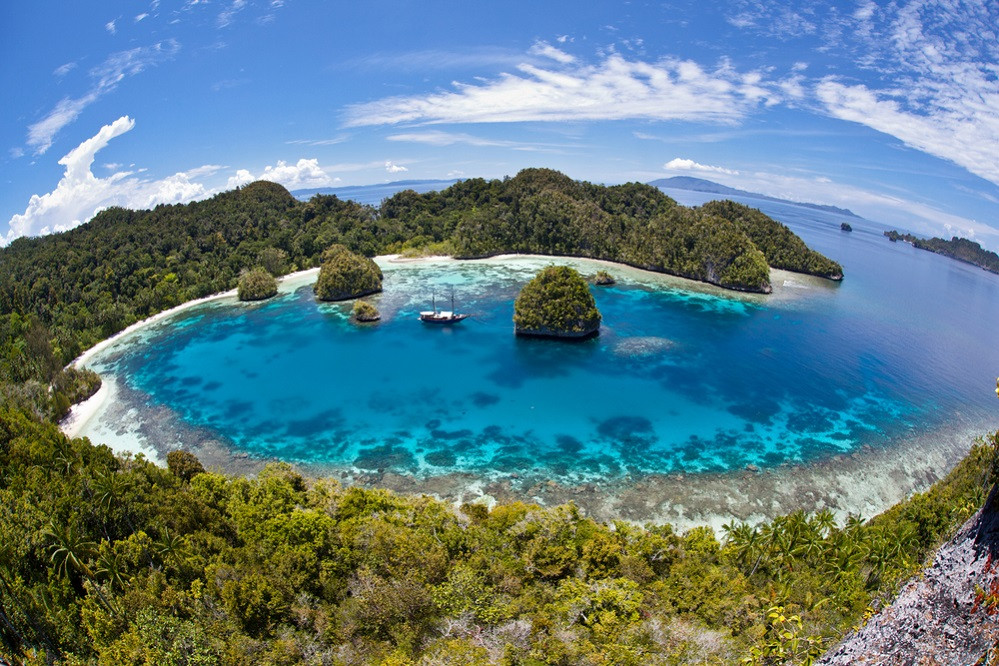Popular Reads
Top Results
Can't find what you're looking for?
View all search resultsPopular Reads
Top Results
Can't find what you're looking for?
View all search resultsUnderwater beauty key to sustainable tourism in Indonesia
Taking advantage of “the great reset” by switching gears to sustainable marine tourism is key to reaping the benefits of this sector as a new source of revenue growth.
Change text size
Gift Premium Articles
to Anyone
I
ndonesian children are generally familiar with the folk song “Nenek Moyangku Seorang Pelaut” (Our ancestors are seafarers), which refers to the maritime wealth of the country, the world’s largest archipelago.
Data from the Maritime Affairs and Fisheries Ministry show that Indonesia has a coastline spanning 95,181 kilometers, the second longest in the world, and a marine area measuring 5.8 million square kilometers, equivalent to 71 percent of Indonesia’s sovereign territory. Its vast seas certainly hold a wide variety of underwater beauty.
One renowned underwater destination is the Coral Triangle located in the western Pacific Ocean. From west to east, it spans parts of Indonesia, Malaysia, the Philippines, Timor Leste, Papua New Guinea and the Solomon Islands. Its name refers to the high coral diversity in this area, comprising 605 out of 798 coral species in the world, or 76 percent. Apart from coral, the Coral Triangle is also a paradise for underwater animals. Six of the world's seven species of sea turtles and more than 2,000 species of reef fish live here. Indonesia is the center of marine diversity in the Coral Triangle.
The Indonesian part of the Coral Triangle ranges from the eastern waters of Kalimantan to the eastern waters of Papua. According to the WWF, the waters surrounding the island of New Guinea, specifically the waters of the Doberai Peninsula in West Papua province, are home to the largest coral diversity. It has 574 different coral species, or 72 percent of the world's coral species. The Raja Ampat archipelago, located to the northwest of the Doberai Peninsula, also have a large coral diversity totaling 553 species of coral in the world, or 69 percent.
Many other unique marine animals are located in the Indonesian part of the Coral Triangle, in the Derawan Islands of East Kalimantan province and one of the country’s new Priority Tourism Destinations (DPP). One of the unique animals that can be found here is the stingless jellyfish that is found in only two places in the world, including the Derawan Islands. The marine ecosystem is well maintained and pure, sustaining the populations of the four different species of stingless jellyfish that live here.
Modern tourism emerged in Indonesia with the Vereeniging Toeristenverkeer (Tourism Association), founded in April 1908 in Weltevredeen, Batavia. Fast-forward 110 years and Indonesia has attracted more than 15 million tourists every year. However, the COVID-19 pandemic has disrupted tourism activities all over the world, and Indonesia’s foreign tourist arrivals reached just 4 million in 2020, or down 88 percent on an annual basis.
On the other hand, many international forums, including the World Economic Forum, have dubbed the pandemic “the great reset”, providing us with the time and lessons to rethink and redesign the way we exploit nature as a major tourist attraction. In Indonesia, the tourism industry looks promising as a new source of economic growth through the influx of foreign exchange, economic activities and the high rate of labor absorption.
However, we cannot deny that tourism activities in Indonesia, which are almost entirely nature-based, have major consequences for environmental sustainability. The ecological footprint that tourists leave behind is higher than nature’s ability to regenerate, so it will threaten the beauty of nature in the long run.
The pandemic period should present a new dawn for Indonesia’s tourism blueprint. One idea is to change Indonesian tourism from mass tourism, which tends to focus on tourist numbers, to sustainable tourism that focuses on quality tourism while oriented to environmental sustainability. Sustainable tourism is a solution to balancing human beings’ ecological footprint and nature’s regenerative ability so that natural conditions can be better conserved. This approach also involves improving the quality of tourists in terms of longer duration of stay and higher expenditure per visitor per visit.
The United Nations World Tourism Organization (UNWTO) has been discussing sustainable tourism in its annual report since 2010 with a focus on global warming, which can trigger a rise in sea level to eventually threaten small islands and archipelagoes that are leading world tourism destinations. In addition, according to some tourism literature, the COVID-19 pandemic is expected to encourage outdoor tourism, and demand for static and indoor tourism attractions is not expected to return as quickly as natural and wildlife tourist attractions.
It is therefore hoped that Indonesia’s large marine tourism potential will be maximized properly as well as responsibly. The ongoing pandemic has especially made many parties realize that sustainable tourism, which maintains harmony between humans and nature, is the key to the Indonesian tourism industry’s success in becoming a source of new economic growth that is more equitable and sustainable.
***
Rifki Maulana is an economic analyst at the East Kalimantan representative office of Bank Indonesia (BI); Rivky Rasyid is an economic analyst at the BI representative office for Papua. These views are personal.










